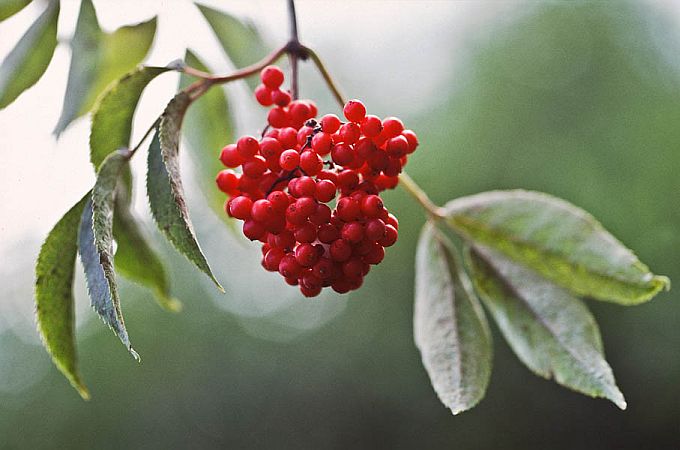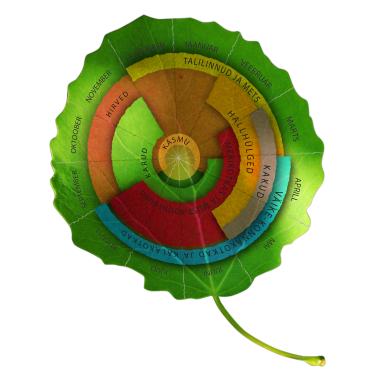Red-berried elder Punane leeder Sambucus racemosa
Elder; Common elder Must leeder Sambucus nigra
Both the species above have slowly ”diffused” into Estonian nature. They were brought here as ornamentals and shrubs for green areas (flowers, fruits as well as leaves are very decorative) and have been spread by birds. The birds happily devour the berries, or botanically drupes, some time later dropping the seeds together with ”fertilizer” to the ground. So we see the red-berried elder at forest verges, mixed forests, sometimes even in a spruce forest, urban waste lands, at “unofficial” waste dumps, at the back of sheds.
The little berries of the red-berried elder are for some reason thought to be poisonous, but the seeds only are slightly toxic, and the flesh of the fruit can even be considered tasty and nutritionists see them as beneficial for the organism. On no account however should raw berries be tested, and the seeds must be spit out.
Elderberry jam can be quite delicious. One recipe follows here, someone may be interested since the time is suitable for picking the berries: for half a kilo of elder berries use 100 ml of water, the juice of two lemons and half a kilo of sugar. Simmer gently for 30-40 minutes.
In western
The black berries of the common elder Sambucus nigra, in larger berry clusters and similar to rowan-berry clusters, are poisonous.






